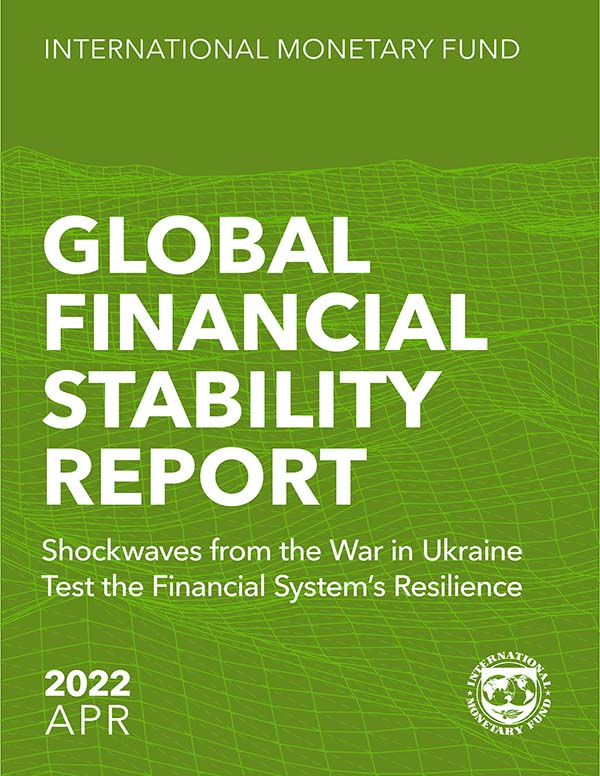Global Financial Stability Report, October 2022: Navigating the High-Inflation Environment
October 11, 2022
Preview Citation
Format: Chicago
Summary
Shockwaves from the War in Ukraine Test the Financial System’s Resilience
Chapter 1 looks at the implications of the war in Ukraine on the financial system. Commodity prices pose challenging trade-offs for central banks. Many emerging and frontier markets are facing especially difficult conditions. In China, financial vulnerabilities remain elevated amid ongoing stress in the property sector and new COVID-19 outbreaks. Central banks should act decisively to prevent inflation from becoming entrenched without jeopardizing the recovery. Policymakers will need to confront the structural issues brought to the fore by the war, including the trade-off between energy security and climate transition. Chapter 2 discusses the sovereign-bank nexus in emerging markets. Bank holdings of domestic sovereign bonds have surged in emerging markets during the pandemic. With public debt at historically high levels and the sovereign credit outlook deteriorating, there is a risk of a negative feedback loop that could threaten macro-financial stability. Chapter 3 examines the challenges to financial stability posed by the rapid rise of risky business segments in fintech. Policies that target both fintech firms and incumbent banks proportionately are needed.
Subject: Asset and liability management, Asset prices, Central Banks, Climate finance, Emerging and frontier financial markets, Environment, Financial markets, Liquidity, Prices, Securities markets
Keywords: Antidilution levies, Asia and Pacific, Asset management, Asset price fragility, Asset prices, Asset return volatility, Blended finance, Bond funds, Bond issuance, Carbon markets, Caribbean, Cash buffers, Central and Eastern Europe, Central banks, China property sector, China spillovers, Climate ambition gap, Climate change adaptation, Climate change mitigation, Climate data, Climate disclosures, Climate finance, Climate information architecture, Corporate bonds, Corporate defaults, COVID-19 market turmoil, Dash for cash, Debt distress, Debt issuance, Developing economies, Developing economy, Dollar strength, Emerging and frontier financial markets, Emerging markets, Emerging markets, ESG funds, ESG score, ESG scores, European energy crisis, Financial conditions, Financial stability, Financing costs, Fire sales, First mover advantage, Foreign reserves, Fossil fuel expansion, Fossil fuel investments, Fragility, Fragmentation, Frontier markets, Global, Global bank stress test, Green bonds, Green finance, Growth-at-risk, Herding, House prices, IMF Resilience and Sustainability Trust, Inflation, Leveraged finance, Liquidity, Liquidity management, Liquidity mismatch, Macro uncertainty, Market liquidity, Market stress, Market structure, Middle East, Monetary policy, Monetary policy tightening, Monetary policy uncertainty, Multilateral development banks, Nonbank financial intermediation, Open-end investment funds, Paris Agreement Article 6, Portfolio flows, Redemptions, Rising interest rates, Runs on funds, Securities markets, Selling pressure, Sovereign sustainable bonds, Spillovers, Stagflation, Strategic complementarities, Structured finance, Sustainability-linked bonds, Sustainable finance, Swing factors, Swing pricing, Taxonomies, Term premia, TPI, Transition finance, Transition plans, Transmission Protection Instrument, Volatility
Publication Details
-
Pages:
111
-
Volume:
---
-
DOI:
---
-
Issue:
---
-
Series:
Global Financial Stability Report No 2022/002
-
Stock No:
GFSREA2022002
-
ISBN:
9798400219672
-
ISSN:
1729-701X








